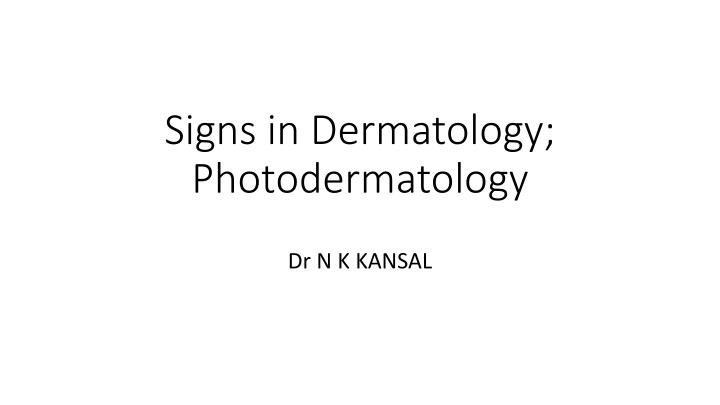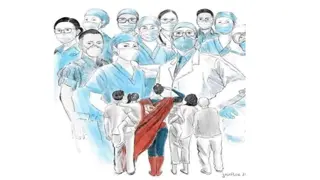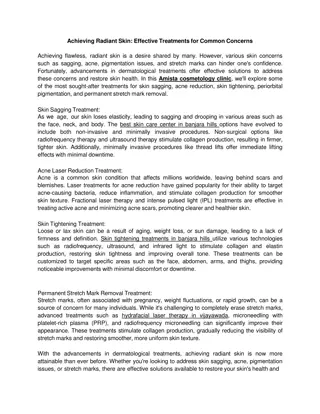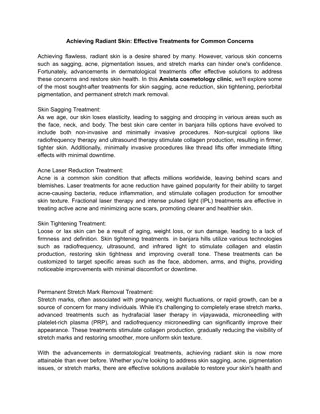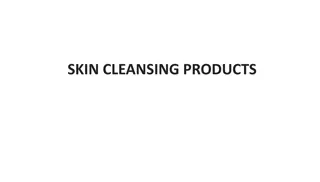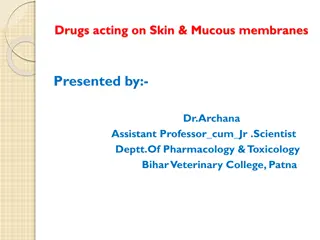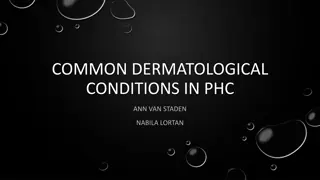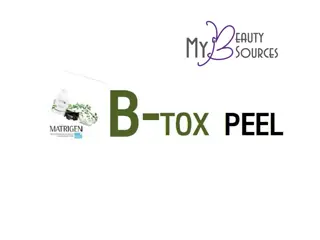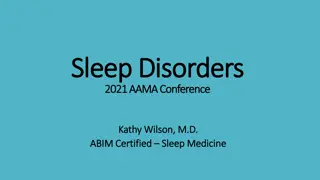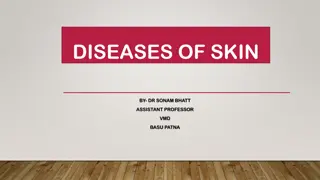Dermatological Signs: Recognizing Skin Disorders
Learn about key dermatological signs such as the Nikolsky sign, Casals necklace, NF1 Button hole sign, Crowe sign, and Carpet tack sign. Understand the visual indicators of various skin disorders like immunobullous disorders, pellagra dermatitis, and dermatomyositis. Enhance your knowledge in dermatology with these informative visual representations.
Download Presentation

Please find below an Image/Link to download the presentation.
The content on the website is provided AS IS for your information and personal use only. It may not be sold, licensed, or shared on other websites without obtaining consent from the author.If you encounter any issues during the download, it is possible that the publisher has removed the file from their server.
You are allowed to download the files provided on this website for personal or commercial use, subject to the condition that they are used lawfully. All files are the property of their respective owners.
The content on the website is provided AS IS for your information and personal use only. It may not be sold, licensed, or shared on other websites without obtaining consent from the author.
E N D
Presentation Transcript
Signs in Dermatology; Photodermatology Dr N K KANSAL
Immunobullous disorders The Nikolsky sign a firm sliding pressure with the finger separates normal-looking epidermis from dermis, producing an erosion; also seen in TEN Bulla-spread phenomenon - gentle pressure on an intact bulla forces the fluid to spread under the skin away from the site of pressure (also k/a Asboe Hansen sign, or the indirect Nikolsky or Nikolsky II sign)
Casals necklace (Pellagra dermatitis) Development of sharply demarcated area of erythema on dorsa of hands, wrists, forearms, the face & V of the neck (photoexposed parts of the skin) F/B well-demarcated area of pigmentation The sharply demarcated lesions on the neck & upper central part of the chest - known as Casal s necklace
NF1 Button hole sign: Molluscum fibrosum - Small, superficial, soft, skin- colored to darker, dome-shaped nodules, which can be pushed through a defect in the skin
The Crowe sign- Pathognomonic presence of axillary freckling in NF1 Present in about 30% cases
Carpet tack sign (DLE) Characteristic lesion is a well-demarcated, discoid/annular, erythematous plaque with adherent scales When the scale is removed, its undersurface shows keratotic spikes which have occupied the dilated pilosebaceous canals
Dermatomyositis Dermatomyositis Characterized by autoimmune inflammatory injury to striated muscle & skin Heliotrope (a lilac-colored flower) erythema: Faint lilac erythema, periorbitally, usually associated with edema Gottron s papules: Violaceous, atrophic papules over the knuckles & pressure points
Gottrons sign: Symmetrical, lilac erythema & edema over interphalangeal or metacarpophalangeal joints, elbows & knees Shawl sign: Symmetrical confluent violaceous erythema extending from dorsolateral aspect of hands, forearms & arms to deltoid region, shoulders & neck Mechanic s hand: Confluent symmetric hyperkeratosis along ulnar aspect of thumb & radial aspect of fingers
Psoriasis Grattage test - Scales in a psoriatic plaque can be accentuated by grating with a glass slide Auspitz sign- 3 steps Step A: Gently scrape lesion with a glass slide - This accentuates the silvery scales (Grattage test positive). Scrape off all the scales Step B: Continue to scrape the lesion A glistening white adherent membrane (Burkley s membrane) appears Step C: On removing the membrane, punctate bleeding points become visible - positive Auspitz sign
Leprosy (Hansens disease) Cardinal signs A case of leprosy is a person having one or more of the following three cardinal signs & who has yet to complete a full course of treatment: Hypopigmented or reddish skin lesion(s) with definite loss/impairment of sensations Involvement of the peripheral nerves, as demonstrated by definite thickening with loss of sensation in the area of distribution Positive skin smear for acid - fast bacilli
Groove sign of Greenblatt Inguinal syndrome (secondary stage) of lymphogranuloma venereum Enlargement of the femoral & inguinal lymph nodes separated by the inguinal ligament
Homans sign (DVT) When symptomatic, onset of DVT is usually acute with swelling, pain & cyanosis Pain worsens on dorsiflexion of foot
Photodermatology Electromagnetic radiation: any kind of radiation consisting of alternating electric and magnetic fields and which can be propagated even in the vacuum Solar spectrum consists of electromagnetic (EM) radiations extending from Very short wavelength cosmic rays X-rays & -rays Ultraviolet Visible Infrared radiation Long (wavelength) radio and television waves
UV, Visible & Infrared light Light having wavelength b/w 200 - 400 nm ultraviolet radiation (UVR); classified as: UVC (200 290 nm): does not reach Earth s surface as it is filtered by the ozone layer of the atmosphere UVB (290 320 nm): 0.5% of solar radiation reaching Earth s surface; reaches only up to the epidermis; causes sunburn; does not pass ordinary glass UVA (320 400 nm): 95% of solar radiation reaching Earth s surface; penetrates both epidermis and dermis; causes photoaging & tanning of the skin; passes through ordinary window glass
Visible light: Extends between 400 and 700 nm; is part of EM spectrum perceived by eyes Infrared radiation: Extends beyond 700 nm; is responsible for heating effect
Sunburn Etiology: Action spectrum: UVB which induces release of cytokines in skin, resulting in pain, redness, erythema edema and even blistering Skin type: Most frequent and intense in individuals who are skin type I & II Clinical features Seen in light skinned Areas overexposed to UVR become painful and deeply erythematous after several hours Redness peaks at 24 h and subsides over next 48 72 h, followed by sheet-like peeling of skin and then hyperpigmentation
Treatment Prevention Avoiding overexposure to sun (e.g., sunbathing), especially by light-skinned individuals Using protective clothing and sun shades UVB protective sunscreens Symptomatic treatment Calamine lotion provides comfort Topical steroids help, if used early Nonsteroidal anti-inflammatory drugs like aspirin relieve pain & also the inflammation
Tanning Etiology: Following exposure to UVR, pigmentation occurs in two phases: Immediate pigmentation: Occurs within 5 min of exposure to UVA and is due to: Photo-oxidation of already formed melanin Rearrangement of melanosomes Delayed pigmentation: Begins about 24 h after exposure to both UVB as well as UVA; due to: Proliferation of melanocytes Increased activity of enzymes in melanocytes resulting in increased production of melanosomes Increased transfer of newly formed melanosomes to adjoining keratinocytes
Clinical features Pigmentation following exposure to light occurs in two phases: Immediate pigmentation lasts for about 15 min Delayed pigmentation lasts for several days Degree of pigmentation depends on the constitutional skin color Lighter skins burn on UV exposure while darker skins tan
Photoaging Etiology Photoaging involves changes in epidermis and dermis Action spectrum: Epidermis is affected primarily by UVB and dermis by both UVA and UVB Manifestations Photoaged skin appears dry, deeply wrinkled, leathery and irregularly pigmented Comedones are present, especially around the eyes Histologically: marked elastotic degeneration
Polymorphic Light Eruption (PMLE) Etiology Action spectrum: UVA (more frequently incriminated) or UVB (less frequently) Probably a delayed hypersensitivity to a neoantigen produced by the action of UVR on an endogenous antigen Epidemiology Prevalence: Fairly common dermatosis Gender: Female preponderance Age: Usually in third to fourth decade
Clinical features Described as polymorphic eruption, but in a given patient lesions are usually monomorphic Small, itchy, papules, papulovesicles or eczematous plaques on an erythematous background Develop 2 h to 2 days after exposure to UVR Sites of predilection Most frequently seen on the sun-exposed areas: Dorsae of hands, nape of neck, V of chest and dorsolateral aspect of forearms Face and covered parts are occasionally involved Course Recurrent problem, begins in spring and persists through summer
Treatment Photoprotection: Avoid exposure to sunlight Use of appropriate clothing Sunscreens: Important to use UVA sunscreens (i.e., inorganic sunscreens. Or those containing benzophenones, avobenzone, tinosorb, etc.) Symptomatic treatment: Topical/systemic steroids, depending on severity Antihistamines Hardening of skin: With gradually increasing doses of UVB or PUVA Unremitting PMLE: Azathioprine, thalidomide and cyclosporine are useful
Phototoxic Reaction- Non-immunological In all individuals exposed to chemical and light in adequate dose Photoallergic Reaction- Immunological response To a photoproduct created from chemical by light Occurs in sensitized individuals
Clinical features Phototoxic reactions Dose of drug/chemical needed: Large Latent period: Reaction immediate (within minutes to hours) after exposure to light and can occur after first exposure Morphology: Initially, there is erythema, edema, and vesiculation F/B desquamation and peeling Finally the lesions heal with hyperpigmentation (similar to sunburn).
Photoallergic reactions Dose of drug/chemical needed: Small Latent period: Reaction occurs on second or third day Does not occur on first exposure but after second or later exposures Symptoms: Itching often severe. Aggravated after sun exposure Morphology: Photoallergic reactions are similar to phototoxic reactions but are more eczematous
Investigations Phototoxic reactions No investigations required Photoallergic reactions Photopatch tests
Treatment Phototoxic reactions Photoprotection Withdrawal of drug: Only necessary, if excessive exposure to UVR cannot be avoided Symptomatic treatment: Topical steroids Nonsteroidal anti-inflammatory drugs Photoallergic reactions Photoprotection: Very important Withdrawal of drug & substitution with a chemically unrelated drug is essential Symptomatic treatment: Mild disease: Topical steroids and antihistamines Severe disease: Systemic steroids, azathioprine & methotrexate in severe dermatosis
Solar radiation can be both a boon or bane to the skin
